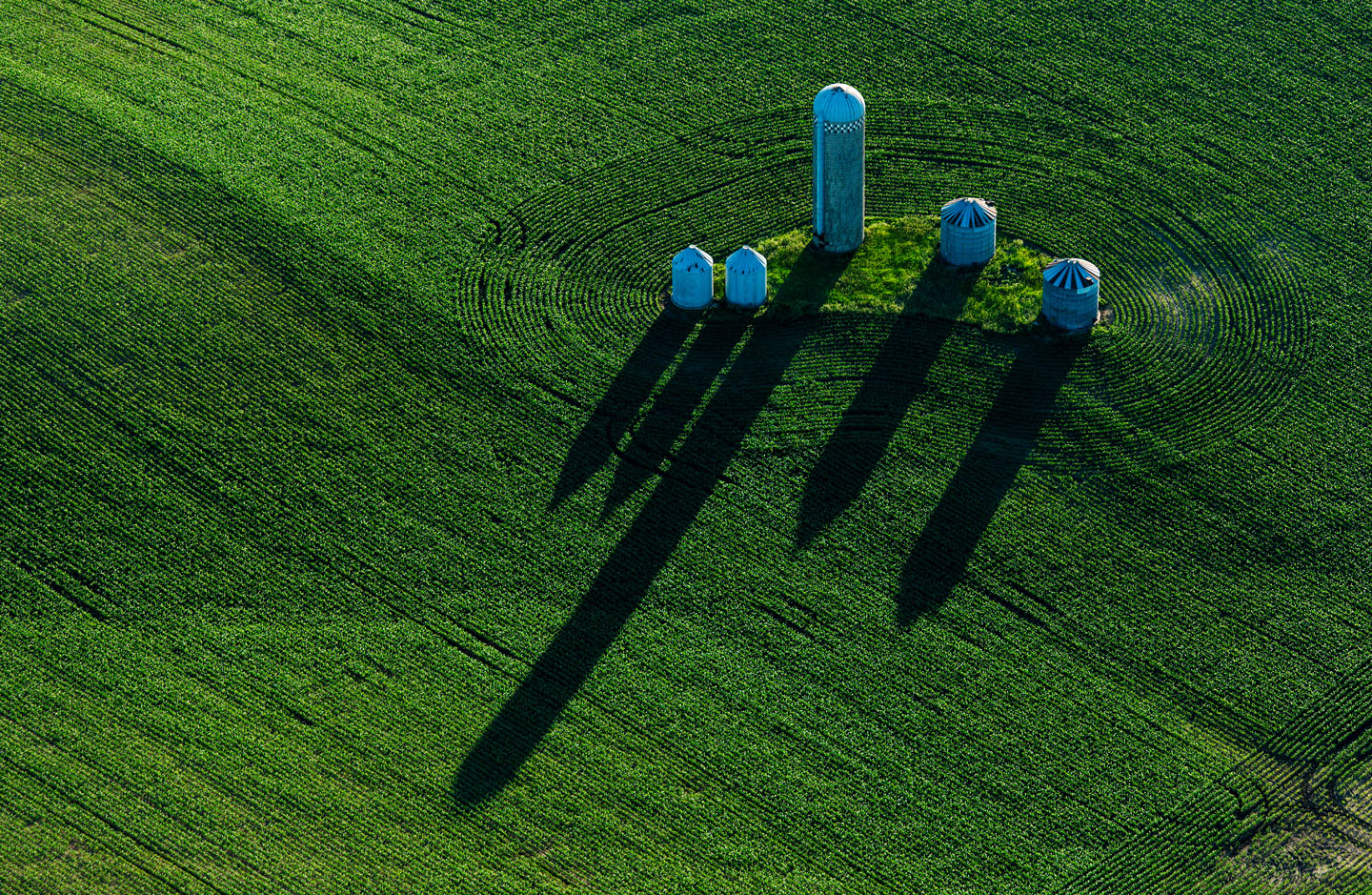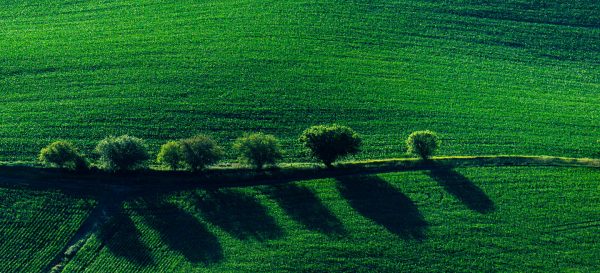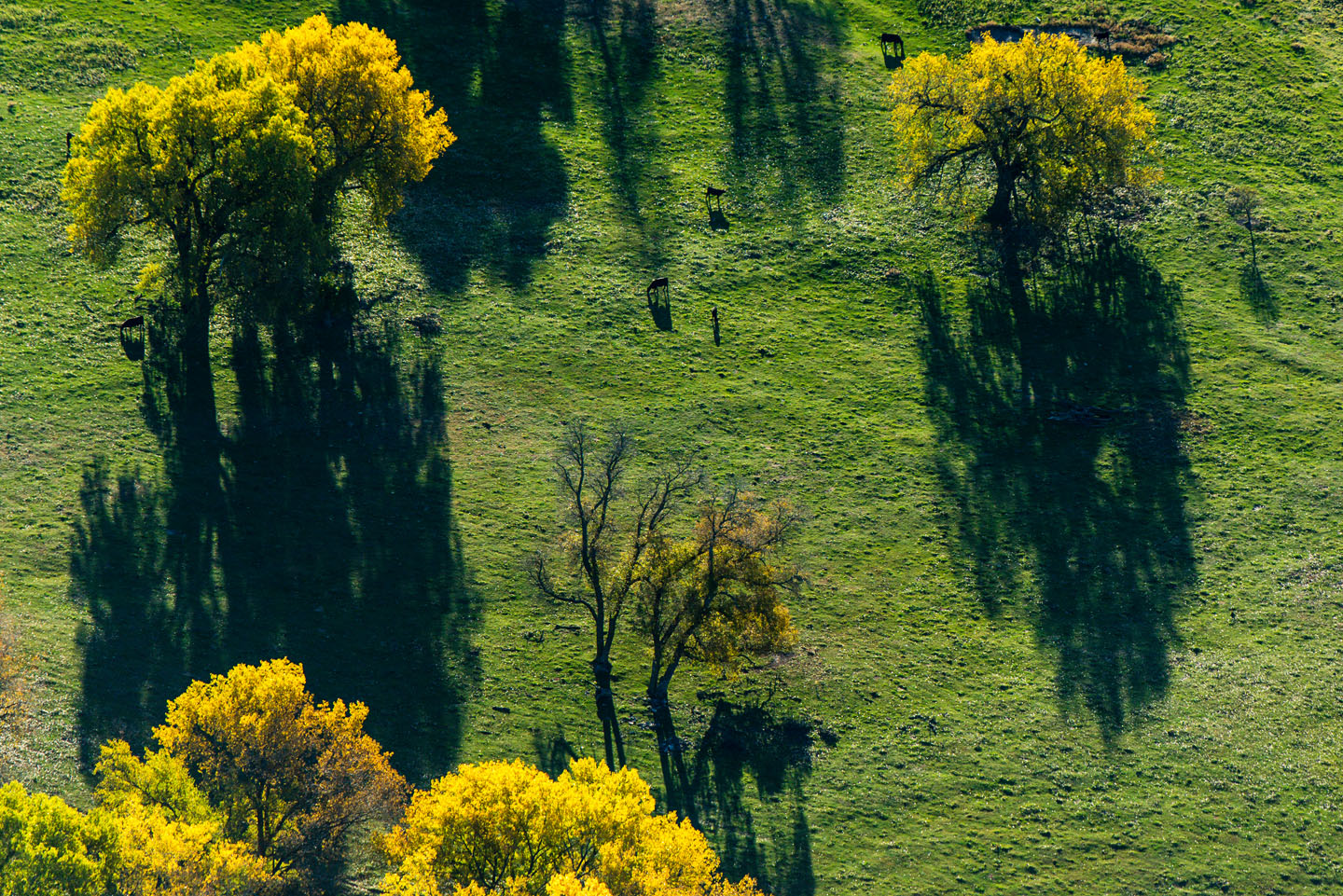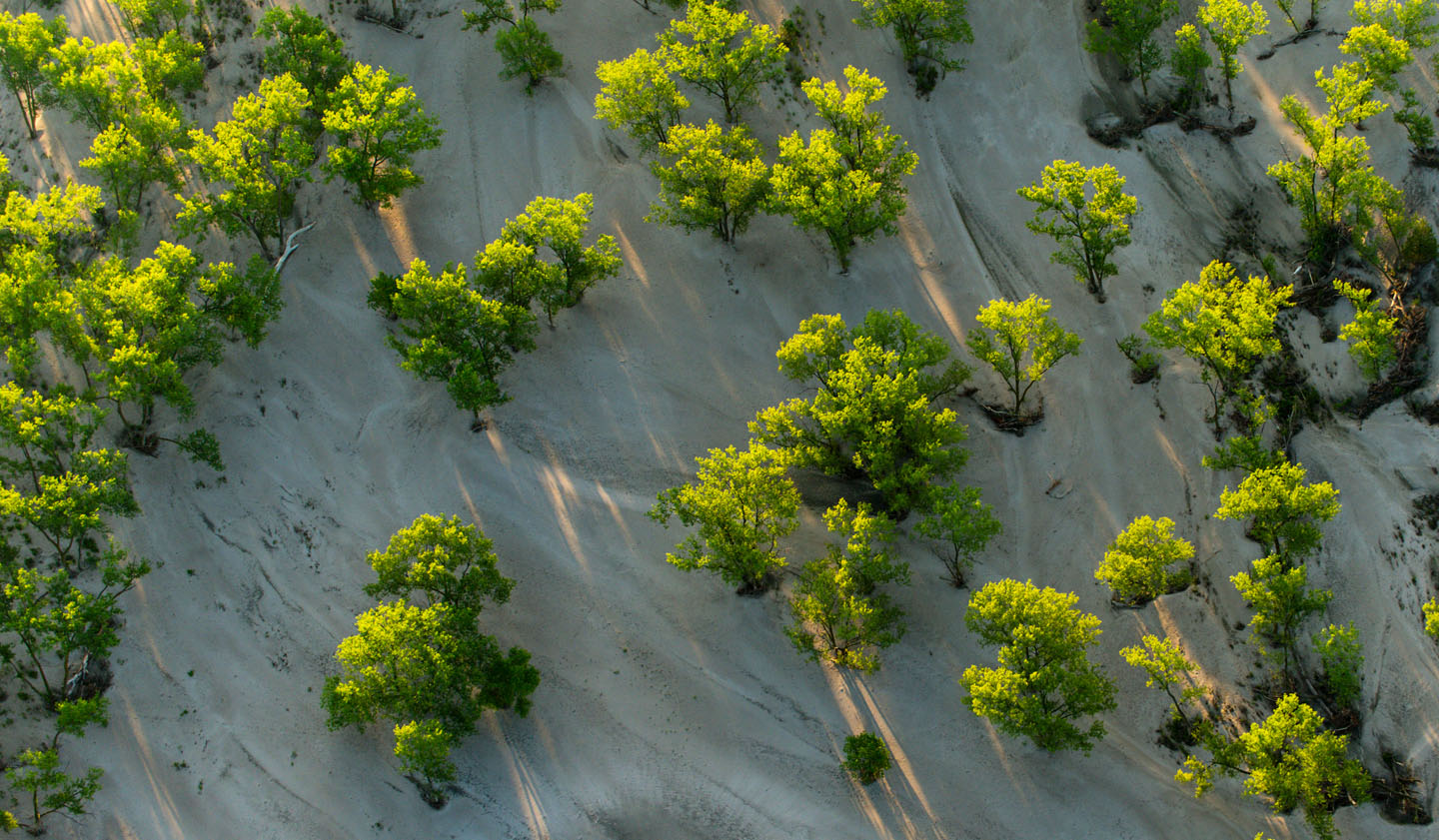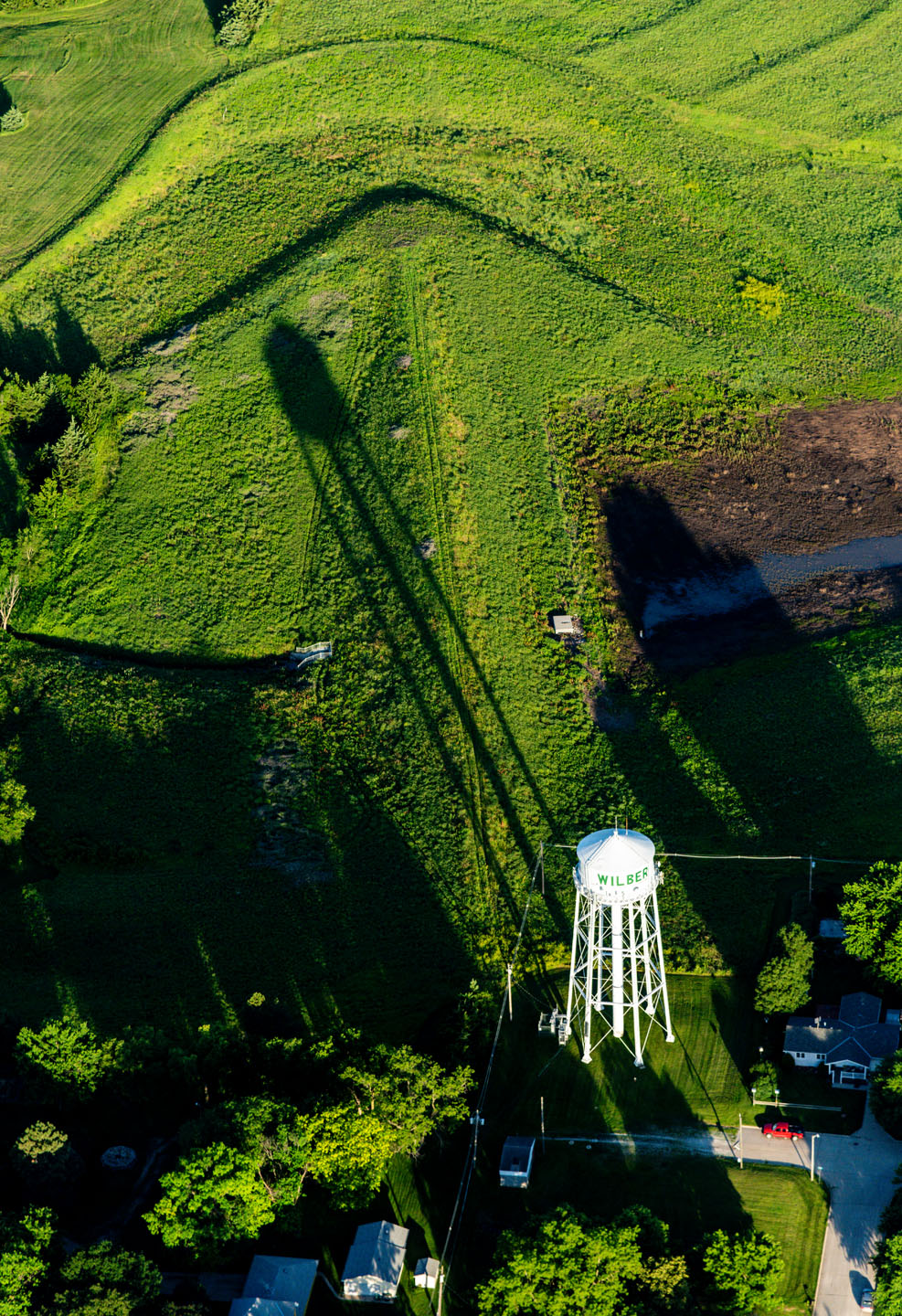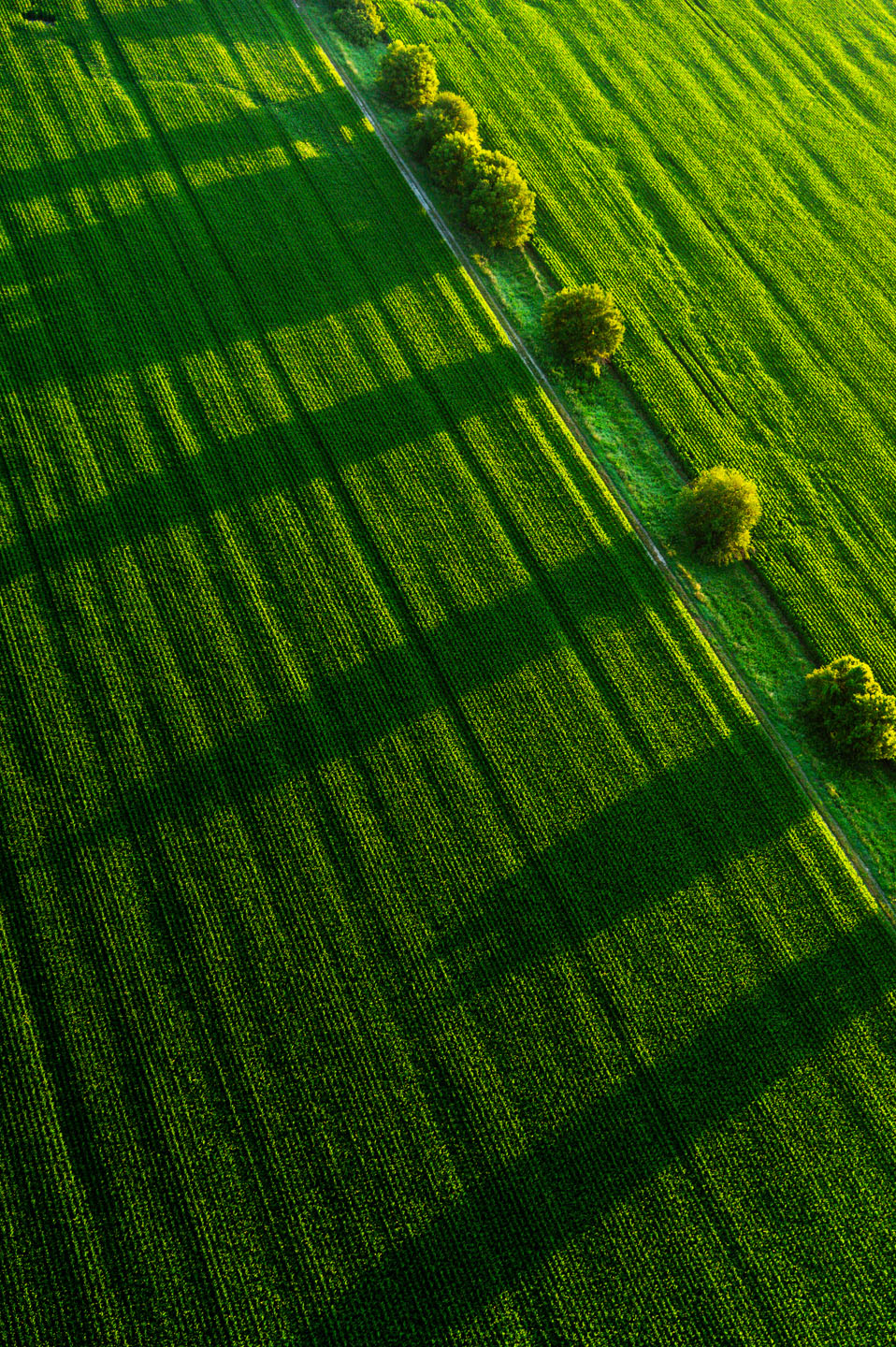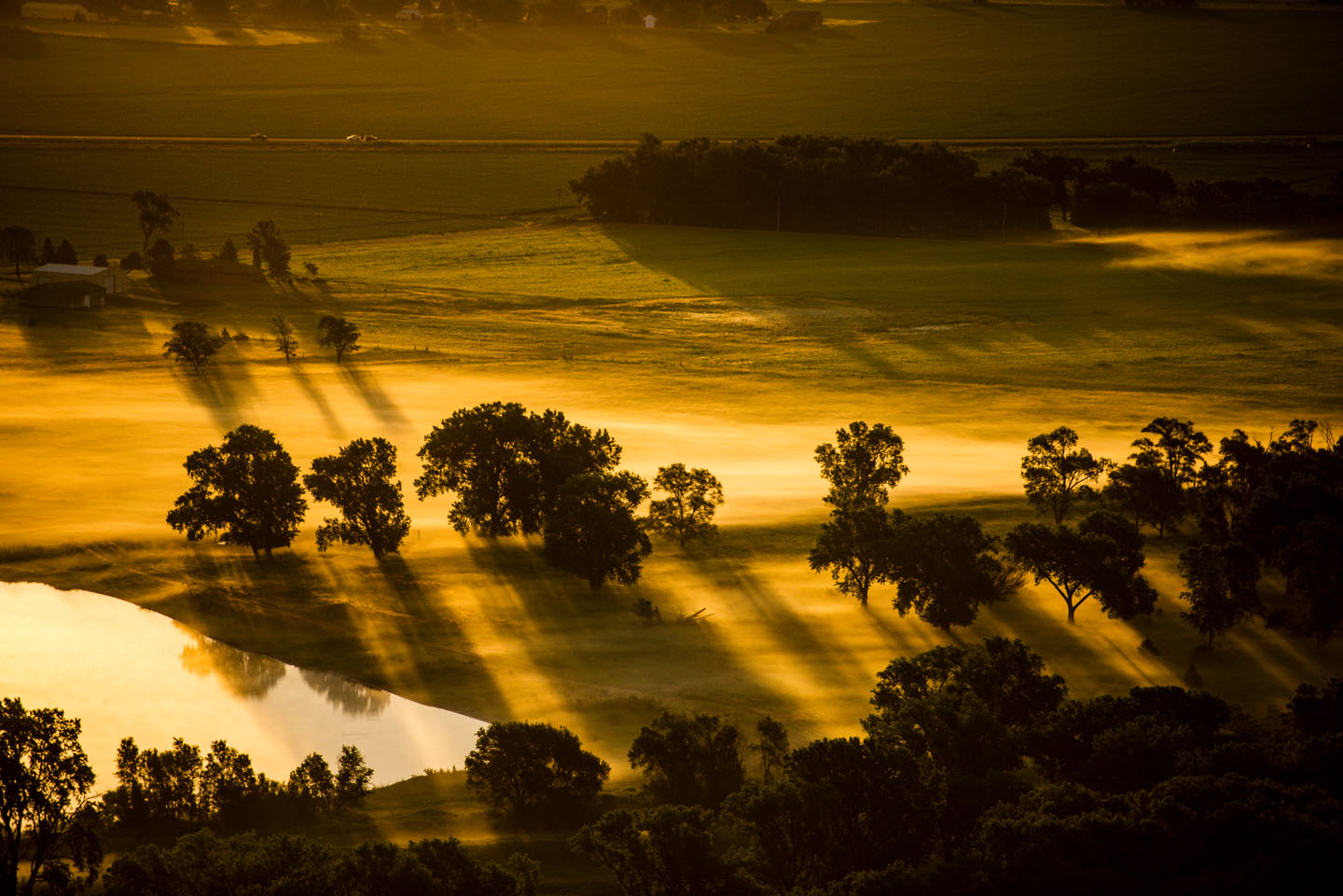
Photos and story by Eric Fowler
We’ve all stood and looked at our shadows on the ground, many of us even creating shadow puppets in our younger years or, later, for the entertainment of our kids and grandkids. We’ve sat in the shade of a tree and watched the darkness cast by a hill or mountain creep across the landscape at the beginning or end of a day.
Shadows are a product of light, an object that blocks that light and geometry. When the light source is the sun, the shadows are the longest early and late in the day. A 60-foot-tall cottonwood, for example, casts a 60-foot-long shadow when the angle of elevation of the sun is 45 degrees above the horizon. Thirty minutes after sunrise, however, when the angle is just 5 degrees, the shadow from that same tree stretches nearly 700 feet.
From ground level, it’s hard to appreciate just how long those shadows can be. From the window of a Cessna, 1,000 feet above the ground, you get a much clearer picture. The contrast of light and dark, and the patterns it creates on the landscape, can be striking, and has always caught my eye when I’ve been on an aerial photo assignment for Game and Parks — especially when the flight plan includes an early takeoff or late landing.
